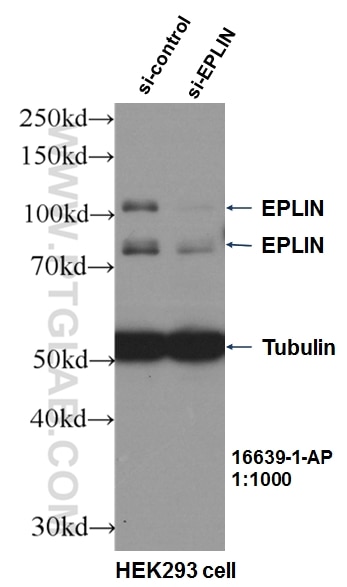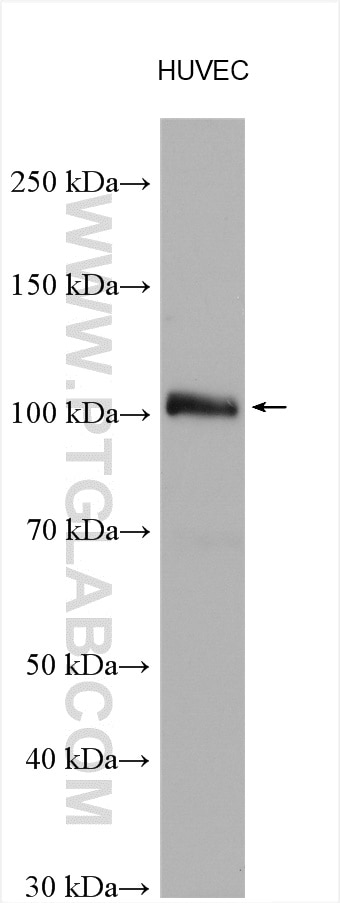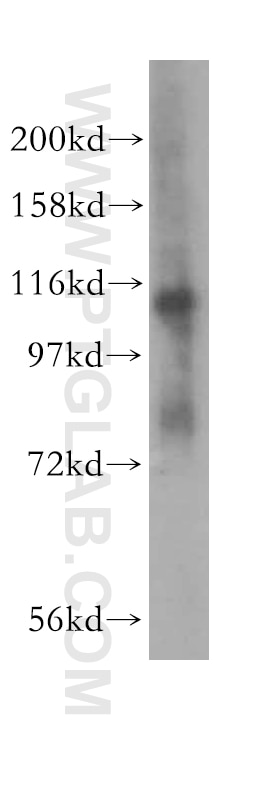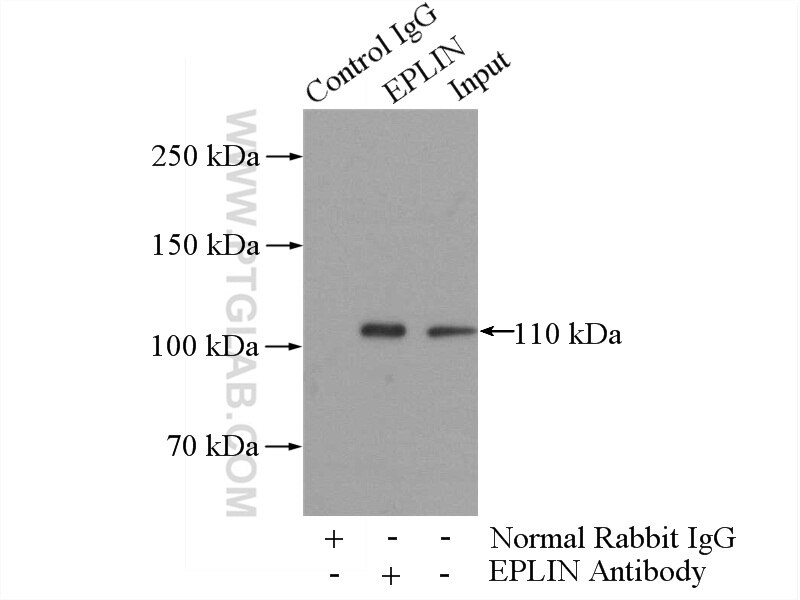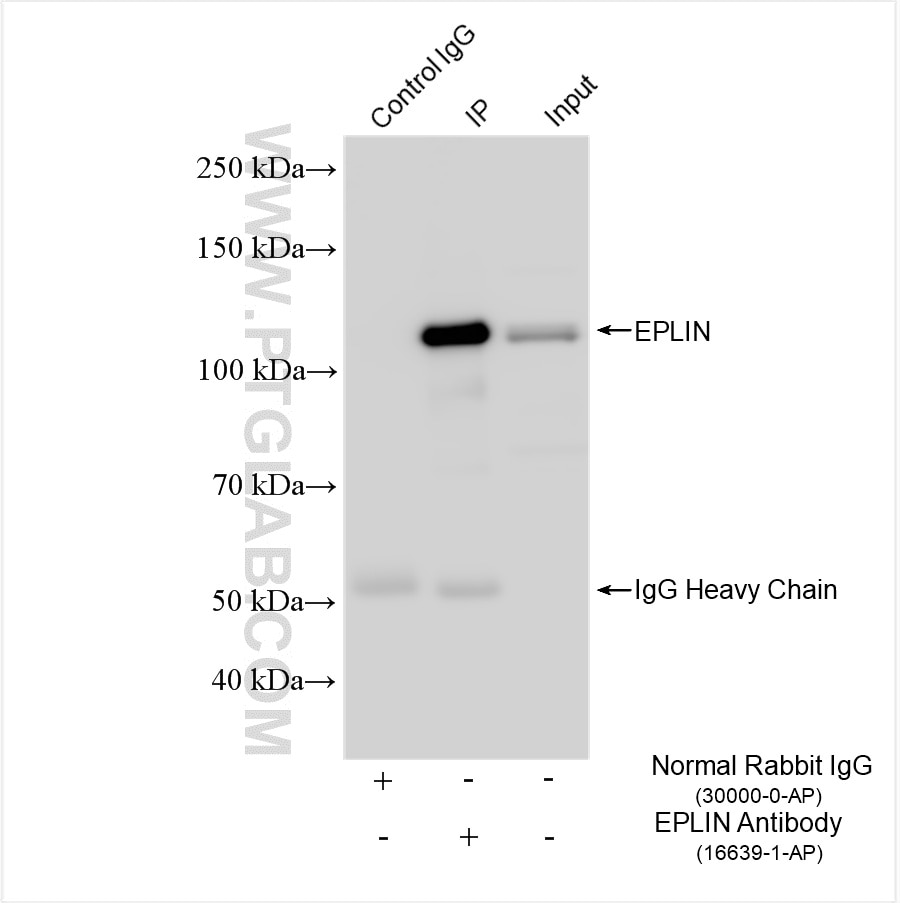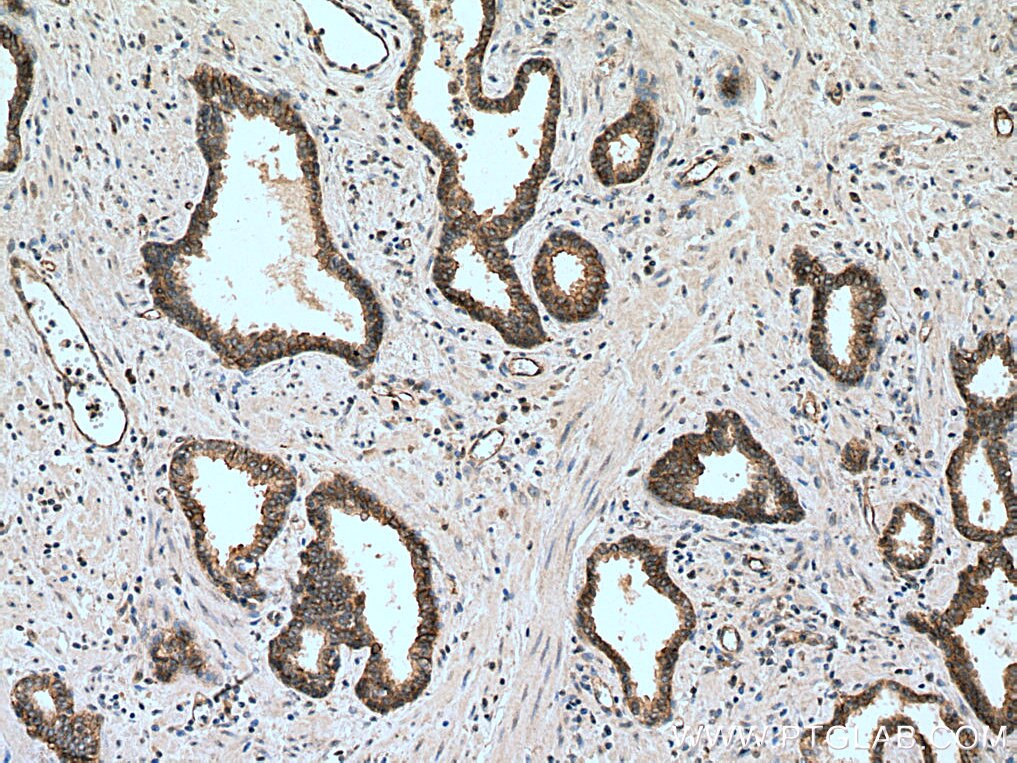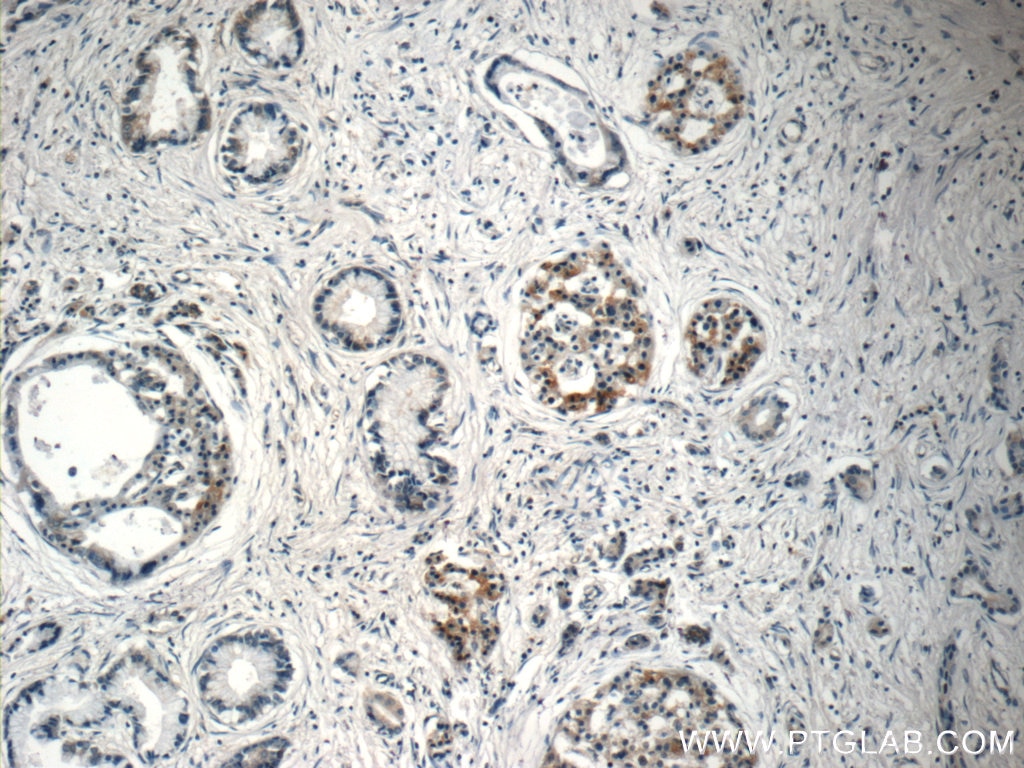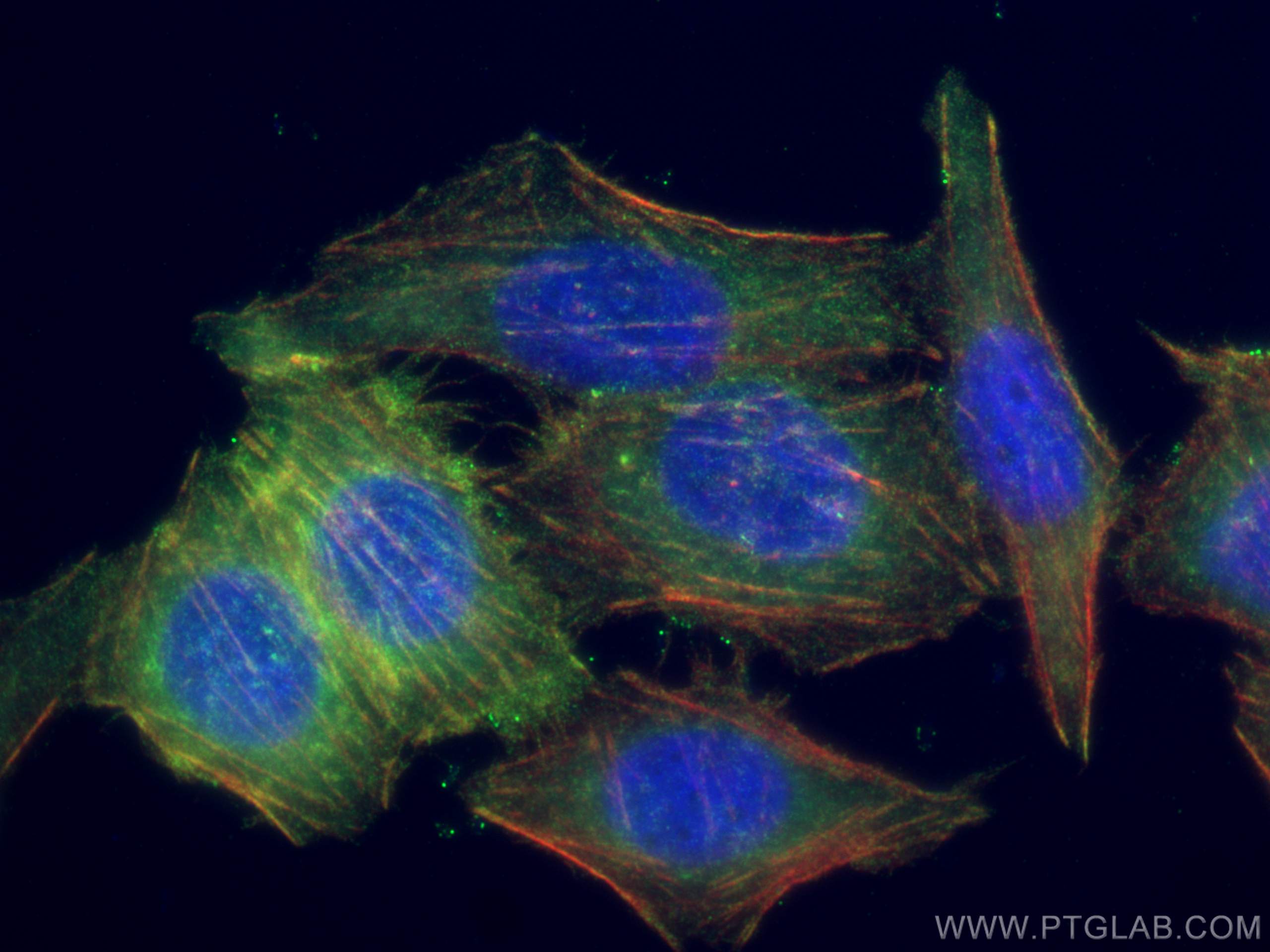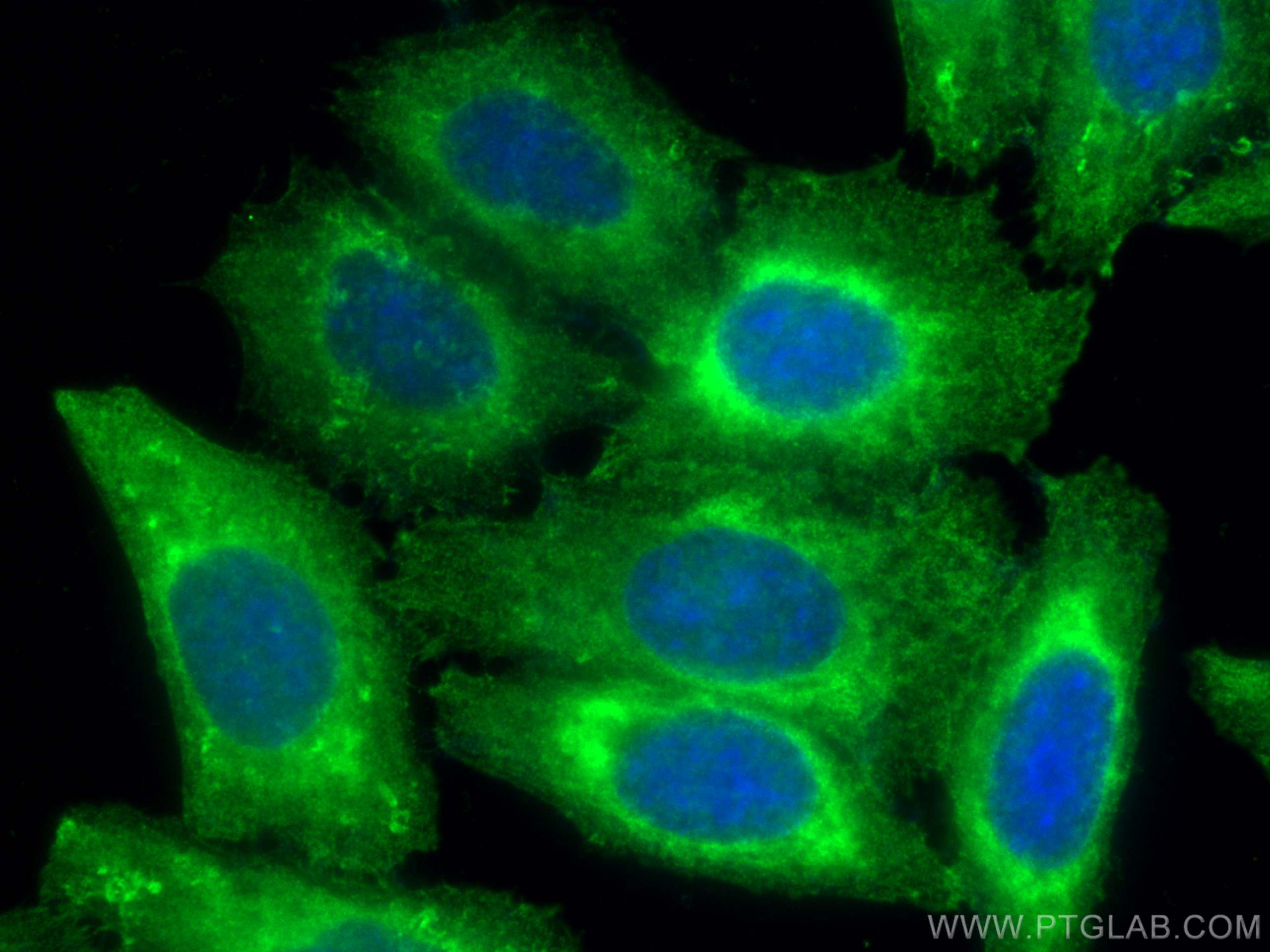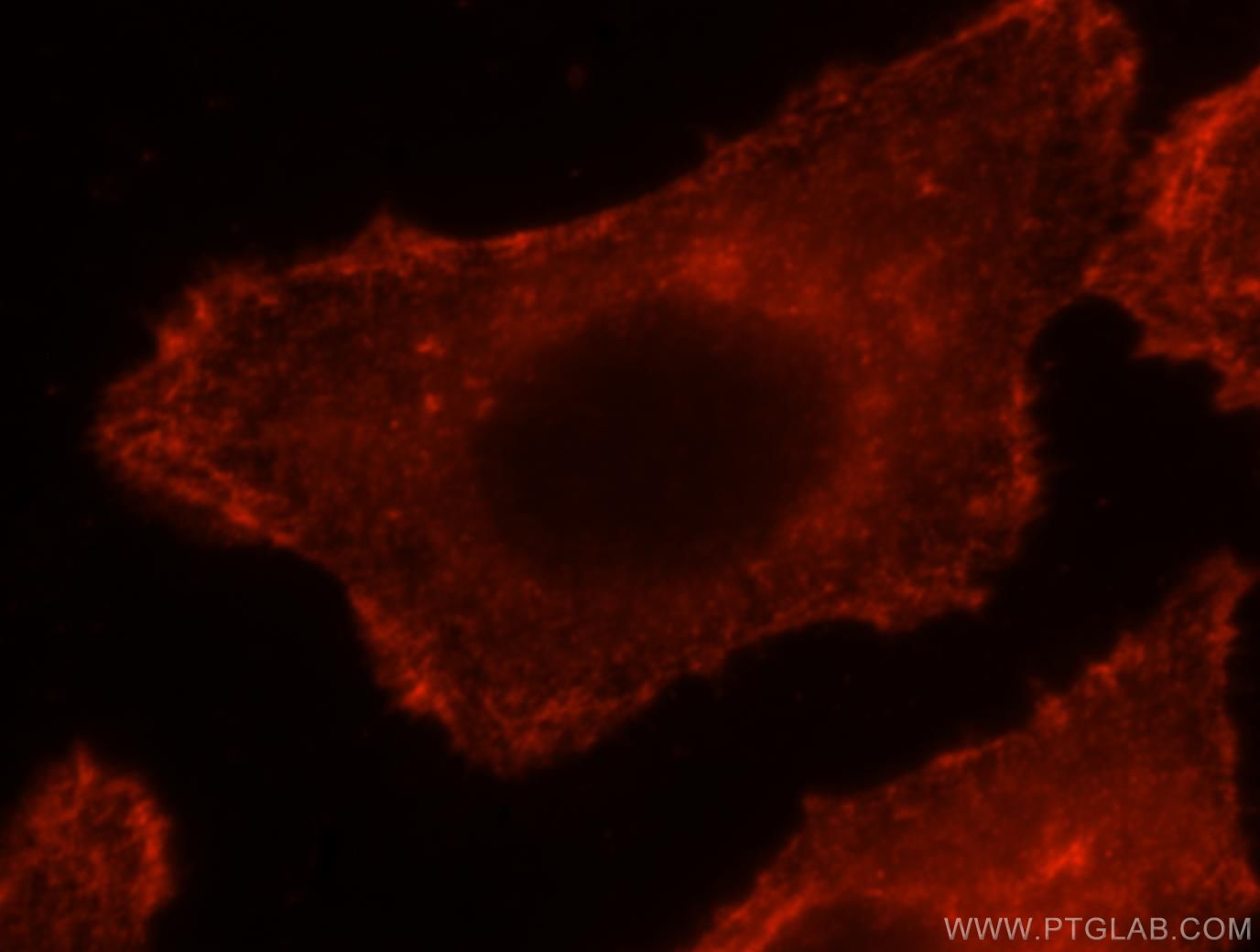- Phare
- Validé par KD/KO
Anticorps Polyclonal de lapin anti-EPLIN
EPLIN Polyclonal Antibody for WB, IHC, IF/ICC, IP, ELISA
Hôte / Isotype
Lapin / IgG
Réactivité testée
Humain, rat, souris
Applications
WB, IHC, IF/ICC, IP, ELISA
Conjugaison
Non conjugué
N° de cat : 16639-1-AP
Synonymes
Galerie de données de validation
Applications testées
| Résultats positifs en WB | cellules HUVEC, cellules HEK-293, tissu placentaire humain |
| Résultats positifs en IP | cellules HepG2, tissu hépatique de souris |
| Résultats positifs en IHC | tissu de cancer de la prostate humain, tissu de cancer du pancréas humain il est suggéré de démasquer l'antigène avec un tampon de TE buffer pH 9.0; (*) À défaut, 'le démasquage de l'antigène peut être 'effectué avec un tampon citrate pH 6,0. |
| Résultats positifs en IF/ICC | cellules PC-3, cellules HepG2 |
Dilution recommandée
| Application | Dilution |
|---|---|
| Western Blot (WB) | WB : 1:5000-1:50000 |
| Immunoprécipitation (IP) | IP : 0.5-4.0 ug for 1.0-3.0 mg of total protein lysate |
| Immunohistochimie (IHC) | IHC : 1:50-1:500 |
| Immunofluorescence (IF)/ICC | IF/ICC : 1:50-1:500 |
| It is recommended that this reagent should be titrated in each testing system to obtain optimal results. | |
| Sample-dependent, check data in validation data gallery | |
Applications publiées
| KD/KO | See 1 publications below |
| WB | See 4 publications below |
| IHC | See 3 publications below |
| IF | See 2 publications below |
Informations sur le produit
16639-1-AP cible EPLIN dans les applications de WB, IHC, IF/ICC, IP, ELISA et montre une réactivité avec des échantillons Humain, rat, souris
| Réactivité | Humain, rat, souris |
| Réactivité citée | Humain, souris |
| Hôte / Isotype | Lapin / IgG |
| Clonalité | Polyclonal |
| Type | Anticorps |
| Immunogène | EPLIN Protéine recombinante Ag9994 |
| Nom complet | LIM domain and actin binding 1 |
| Masse moléculaire calculée | 85 kDa |
| Poids moléculaire observé | 90 kDa, 110 kDa |
| Numéro d’acquisition GenBank | BC001247 |
| Symbole du gène | EPLIN |
| Identification du gène (NCBI) | 51474 |
| Conjugaison | Non conjugué |
| Forme | Liquide |
| Méthode de purification | Purification par affinité contre l'antigène |
| Tampon de stockage | PBS with 0.02% sodium azide and 50% glycerol |
| Conditions de stockage | Stocker à -20°C. Stable pendant un an après l'expédition. L'aliquotage n'est pas nécessaire pour le stockage à -20oC Les 20ul contiennent 0,1% de BSA. |
Informations générales
EPLIN is a cytoskeletal protein that is preferentially expressed in epithelial cells and is implicated in regulation of cytoskeletal dynamics and cytokinesis. In human, there are two known isoforms, EPLIN-a and -b, generated by alternative promoter usage from a single gene. The 110 kDa EPLIN-β isoform represents the full-length protein and the 90 kDa EPLIN-α isoform lacks the amino-terminal 160 amino acids. EPLIN-a expression is often down-regulated in cancerous cells and tissues. (PMID: 10806352, 31644899)
Protocole
| Product Specific Protocols | |
|---|---|
| WB protocol for EPLIN antibody 16639-1-AP | Download protocol |
| IHC protocol for EPLIN antibody 16639-1-AP | Download protocol |
| IF protocol for EPLIN antibody 16639-1-AP | Download protocol |
| IP protocol for EPLIN antibody 16639-1-AP | Download protocol |
| Standard Protocols | |
|---|---|
| Click here to view our Standard Protocols |
Publications
| Species | Application | Title |
|---|---|---|
Exp Mol Med The deubiquitinating enzyme STAMBP is a newly discovered driver of triple-negative breast cancer progression that maintains RAI14 protein stability | ||
J Cell Biol Rab40-Cullin5 complex regulates EPLIN and actin cytoskeleton dynamics during cell migration. | ||
Acta Histochem Cytochem EPLINβ Is Involved in the Assembly of Cadherin-catenin Complexes in Osteoblasts and Affects Bone Formation. | ||
Proteomics A proteomic signature and potential pharmacological opportunities in the adaptive resistance to MEK and PI3K kinase inhibition in pancreatic cancer cells | ||
Exp Cell Res Nuclear-cytoplasmic translocation of SQSTM1/p62 protein enhances ESCC cell migration and invasion by stabilizing EPLIN expression
| ||
Cell Biol Toxicol M6A modification-mediated LIMA1 promotes the progression of hepatocellular carcinoma through the wnt-βcatenin/Hippo pathway |
